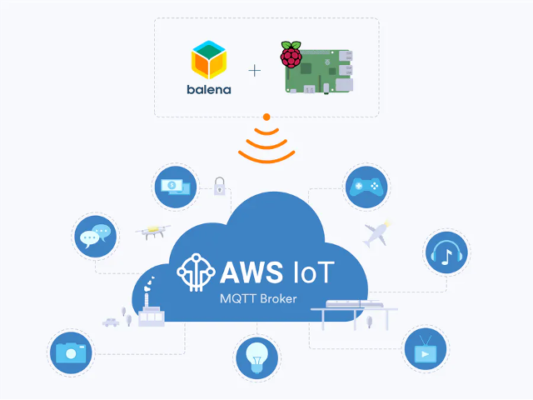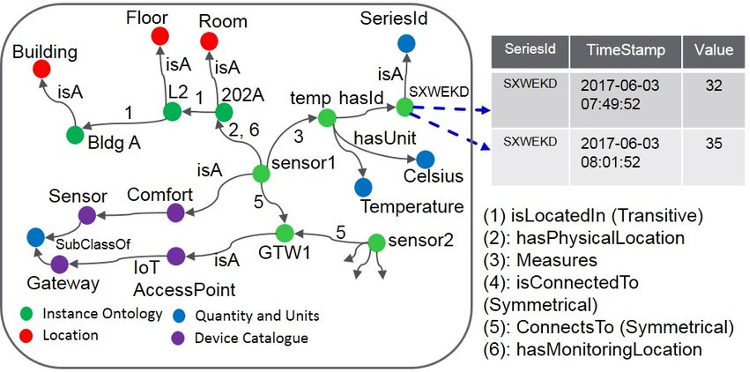1. Introduction
The evolution of the internet of things (IoT) has improved many aspects of life. We can see the applications of IoT in a variety of domains from agriculture to health care. Rather than requiring the interaction of humans, the physical device can do most of the work with very little intervention. People just need to configure the devices, give instructions, or grant access to data.
Big companies have invested in the IoT market. The following are well-known vendors:
– Amazon (AWS IoT).
– Cisco (Jasper).
– IBM (Watson)
– Apple (HomeKit)
– Google (Brillo)
– Microsoft (Azure IoT)
Source: https://www.hackster.io/dansku/use-a-raspberry-pi-to-communicate-with-amazon-aws-iot-e37525
Choosing those third-party IoT platforms can reduce the task of ensuring security, maintenance for integrating IoT to your devices. There are hundreds of other IoT platforms in the market which proves that IoT is a promising technology. However, each of those IoT solutions comes with its own IoT infrastructure, proprietary protocols, and interfaces and forming its ecosystem (silos). That makes it is hard and costly when we can not combine different devices because they are incompatible with each other with different standards, formats, and semantics.
How can we solve this problem? That’s the answer is all about the term “IoT interoperability”.
2. An overview of IoT Interoperability and Multi-Platform Integration.
Interoperability can be defined as the ability of different IoT systems to transfer data and to use that information. It is necessary that we want all these platforms can work together seamlessly. Different systems should be able to communicate, exchange data and use some services of each other.
3. Why do IoT Interoperability and Multi-Platform Integration matter?
Incompatible between IoT platforms put more hard works for application developers. They have to make their products adapt to every platform with different API, information models which the job to build cross-platform apps running on multiple platforms may become more complicated and expensive.
From the perspective of service providers, in case they have been sticking to a single IoT solution for a long time, some changes to their service would be costly and even risky. In addition, for small companies, it is challenging to support all platforms with different interfaces. An increase of 40% of the benefits is what IoT interoperability can bring to the industry according to a new analysis conducted by McKinsey.
4. Classification of IoT interoperability.
To get a better understanding of interoperability, it’s worth classifying it and seeing it from different perspectives.
Device interoperability:
In IoT, it may consist of:
– High-end devices which are smart and have enough resources to make some computations (ie Raspberry Pi, smartphones)
– Low-end devices: sensors, actuators,.. with limited resources and power to operate.
Although they may use different communication protocols: Bluetooth, ZigBee,… They should be enabled to exchange information, and we can integrate new devices into any IoT platform.
Platform interoperability:
There are plenty of operating systems, programming languages, access mechanisms that are designed for devices. For example:
– Apple HomeKit with Swift
– Google Brillo with Weave
– Amazon AWS IoT uses SDKs for embedded C and NodeJS.
This causes difficulties for developers to develop a multiplatform platform app or cross-domain IoTs app. An example of how a cross-platform and cross-domain app can connect to the user health platform of wearable sensors to monitor people’s health (health-care domain). In addition, this application can also access a smart-city platform to buy tickets to bus/train stations (transportation).
Semantic interoperability
Dissimilar systems may create data under popular formats such as JSON, XML, or CSV but models the schemas may not be compatible. Semantic interoperability refers to making different IoT systems able to exchange information despite those differences. There are other categories of IoT interoperability: network interoperability, syntactical interoperability.
Source: https://link.springer.com/article/10.1007/s11036-018-1089-9
5. Multi-platform integration
Devices from multiple IoT platforms with different natures can not communicate effectively and making them compatible can be expensive. One possible solution is a semantic-based integration approach. The following is a great example building a chatbot application that manages the building information requires a combination of different IoT systems:
- The sensing service: sensors collect information about the temperature, humidity, occupancy, and CO2. They are attached to different locations of the building such as desks, cubicles, and offices,..
- Floor mapping service offers a digit map about the locations of every room, desk, office,.. for each floor.
Here is the scratch of steps that helps us combine the two IoT platforms and integrate them into the Chatbot app.
- Create an ontology model to depict the concepts and relations from the two data sources. Ex: Class Sensor, Building, Floor,… The building has many Floor, but Floor belong to only one Building
- Transform our collected data to match our model using ETL processes (Extract, Transform Load). In the chatbot app model:
– Sensors data → ETL → Time-series data.
– Floor mapping data → ETL → Ontology instances.
Ontology Instance and Model Example
Source: https://www.stardog.com/pdf/resources-research/A_Semantic_Based_Multi_Platform_IoT_Integration_Approach_from_Sensors_to_Chatbots.pdf
- Store the received, translated data, created ontology instances, and our created ontology model.
- Define a way to answer a query. For example, the query to get the average temperature of the 1st floor. We use the ontology instances part ( from the floor mapping system ) to get the information of all sensors on the 1st floor and the time-series ID patterns which indicates the data collected by those sensors. We use that information to find entries in time-series data storage and get all temperature data of the 1st floor’s sensors. Finally, we calculate the average temperature.
- Define how to translate natural queries to formatted queries.
6. Conclusion
To wrap it up, an improvement in IoT Interoperability and Multi-Platform Integration is important and necessary for the market to take a leap. Incompatibility may benefit the IoT platform providers for a while, as it makes the customer have to stick with it however it prevents forming the ideal Internet of Things where every device can communicate. Multi-platform integration is currently blooming and helps developers worldwide build apps that target a wide range of users and expand horizontally across different domains.
7. References
https://link.springer.com/article/10.1007/s11036-018-1089-9
https://behrtech.com/blog/interoperability-the-secret-to-a-scalable-iot-network/
https://techbeacon.com/app-dev-testing/app-nirvana-when-internet-things-meets-api-economy
https://en.wikipedia.org/wiki/Cross-platform_software
https://www.stardog.com/pdf/resources-research/A_Semantic_Based_Multi_Platform_IoT_Integration_Approach_from_Sensors_to_Chatbots.pdf



